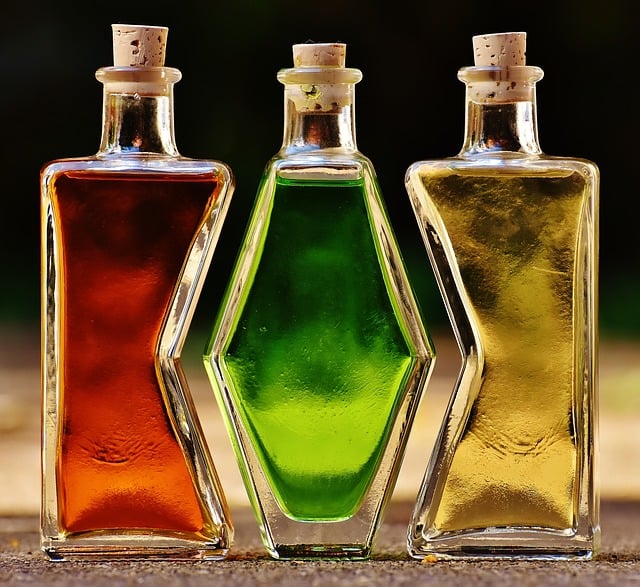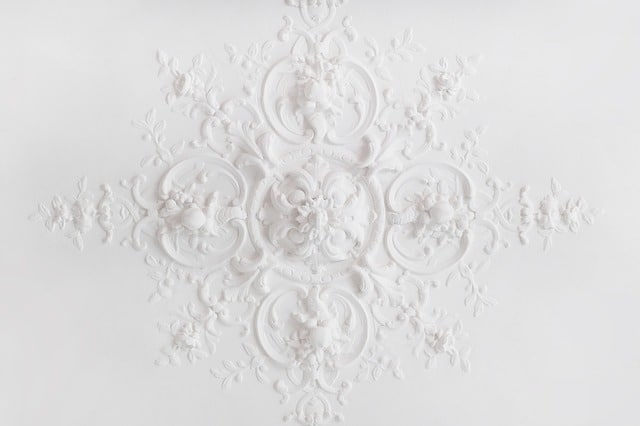What is Enamel Paint Used for?
Most people use enamel paint wrongly over unappropriated surfaces and end up attaining poor results or low-quality paint finish. Maybe you could be facing similar challenges. So, can enamel paint be used over every surface? 
Summary: Enamel paint (water- and oil-based) has a glossy and opaque finish – it’s long-lasting and strong – mainly used in painting metal surfaces and indoors.
It can be used for both new paint applications and the paint restoration process over various surfaces. Consider the type of surfaces/materials that are compatible with enamel paint before paint application is carried out.
The current market enamel paint is made in the water-based or oil-based form. So, match your surface under paint application/reinforcement with the right form when painting.
Details: What is Enamel Paint Used For?
1. New Surface paint Application
Enamel paint can be used to coat new surfaces, which have never been painted previously. These include:
a. Outdoor Furniture
Outdoor furniture such as bench, chairs, swings, round tables, etc. can be coated with enamel paint to protect them from extreme weather conditions like solar radiation, high humidity, UV-rays, dust, and moisture, which may affect the material strength and original aesthetic beauty.
Whether metal, wood, or composited, enamel sticks on the furniture’s surface sufficiently without forming drains/runs, provided proper paint preparation is followed.
In metallic furniture, enamel paint also prevent rusting, while it reduces material aging when used on wooden furniture.
b. Cabinets and Wardrobe
You can use enamel paint on cabinets (both indoor and outdoor) without any problem.
The solvent comes with a complex chemical formulation, which sticks firmly on the cabinet material (metal or wood) forming a tough coat finish.
You can also coat your wardrobe (indoors) using enamel paint. However, precautions should be taken into place since most enamel paint emits fumes that may irritate the respiratory system if inhaled.
c. Refurbishing Deck and Floor
When painting or refurbishing your deck or floor (outdoor), consider enamel paint.
The solvent is more comfortable to apply and forms a self-leveled coat finish, which is stain resistant and fade-free.
The waterproof properties that come with enamel protect the deck and floor from extreme moisture effects and eliminate peeling action, which is more pronounced in other types of paint.
Moreover, enamel paint guarantees you long service life and optional color selection – it’s available in many selectable colors.
d. Concrete Paintings
Newly constructed concrete surfaces can be painted using enamel paint.
But, priming is needed to strengthen the paint layer and reduce multiple coat applications. However, you can opt to buy a self-priming enamel paint.
e. Grill and Barbecue Painting
Your grill or barbecue is best-coated using enamel paint. You will not only eliminate the rusting but also improve the outlook impression.
Moreover, enamel paint has a high heat resistance and thus won’t peel easily upon application.
Remember, enamel paint comes in a various selectable color that gives your grill outlook face of your choice.
See Also: Paint Stripper for Wood
2. Paint Restoration
The paint restoration process using enamel paint enables you to attain a strong paint layer, which is durable and peel resistant.
Therefore, you can use enamel paint on the following surfaces:
a. Deck and Floor Re-painting
Restore your deck and floor by re-painting with enamel paint. Normally, you’ll need to prep your surface sufficiently, and primer where necessary before re-applying enamel paint.
Further, the paint cover is denser if you consider applying two coats, especially when used on an outdoor deck/floor.
b. Artistic Restoration
Artistic design and drawing fade due to exposure to external harsh conditions.
Instead of using acrylic paints (slightly expensive), it’s advisable to opt for enamel paint during the restoration process.
c. Window Frame Re-Painting
Repaint window frames using enamel paint to restore the old faded coat layer.
However, it’s important to know that sanding and surface polishing is necessary before re-paint in order to improve the paint stickiness level upon application.
d. Wall Re-painting
The old painted wall can be repainted using enamel paint. At times, priming is necessary to prevent peeling, especially in wet areas.
Upon surface preparation, dilute enamel paint as per the manufacturer’s instruction and coat the wall sufficiently.
Restore exterior walls with enamel paint and limits its use indoors – contain components that may irritate nasal cavity and skin upon contact. Alternatively, go for latex paint for indoor wall restoration.
e. Furniture Paint Restoration
Re-paint your furniture with enamel paint to attain original aesthetic value.
Outdoor furniture re-gain surface strength upon application. Moreover, the furniture’s service life is extended, while further peeling/scuffing problem is eliminated.
See Also: Airless Paint Sprayer for Cabinets
3. Compatible Materials/Surfaces to Use Enamel
Enamel paint may not be used over every material, due to compatibility issues. Below are some of the surfaces/materials that can be coated with enamel paint:
a. Metal
Metal such as mild steel, aluminum, stainless steel, iron, and iron alloy can be painted with enamel paint.
The pain solvent sticks sufficiently forming a uniform paint layer. Moreover, enamel paint prevents rusting and chipping action.
b. Wood
Wood structures such as chairs, tables, picture frames, etc. can be painted using enamel paint without any problem.
Enamel solvent penetrates the wood material sufficiently and seals surface pores entirely upon application.
See Also: Paint Stripper for Metal
c. Composite
Composite material such as MDF and laminated board hold enamel paint firmly and resist peeling and chipping when exposed to extreme weather conditions such as heat and high humidity.
d. Concrete
Concrete surfaces are best coated with enamel paint. The newly constructed concrete surface should be primed to improve stickiness level.
Usually, enamel paint (oil-based) penetrates into the concrete structure upon application and seals any surface poles.
You may need to apply two or three enamel coats in order to attain the best paint finish.
e. Plastic
Coat all types of plastic with enamel paint. Unlike water-based enamel paint, oil-based enamel paint sticks on plastic surface firmly and resist peeling action.
One coat of enamel paint will work excellently.
f. Ceramics
Ceramics painted using enamel paint have a longer service life and better strength.
Moreover, the items resist fading and disintegration. Ceramics are best painted using oil-based enamel paint.
e. Glass
Glass panes can be coated using enamel paint sufficiently. The paint sticks on the glass surface excellently and dries without forming drains or surface runs.
The paint coat formed on glass material is opaque and resistant to peeling and fading. Notably, enamel painted glass is more comfortable to clean/remove.
See Also: Mildew Resistant Paints
Do and Don’ts of Enamel Paint
When using enamel paint, consider the following DOs and DON’Ts
DOs
- Prepare the surface before applying enamel paint to improve stickiness level – reduces peeling occurrence.
- Always follow the manufacturer’s instructions when preparing enamel paint.
- Match enamel paint with primer used – oil-based primer should be coated with oil-based enamel paint.
- Apply two or three enamel coat layers for new surfaces.
- Enamel painted structures found in the wet areas should be sealed to improve surface life and reduce peeling/scuffing.
- Carry out a drop test experiment over the surface to be painted upon preparing enamel paint.
DON’Ts
- Never mix old enamel paint with a new one – this will weaken stickiness level and initiate peeling upon application.
- Don’t apply enamel paint over drywall or wet surfaces.
- Avoid mixing oil-based enamel paint with water-based enamel paint.
- Don’t apply enamel paint on a surface before preparation is done.
- Desist from using oil-based enamel paint indoors – the paint contains compounds that may irritate the nasal cavity when inhaled.
See Also: Belt Sander for Deck
Advantages and Disadvantages of Using Enamel Paint?
Enamel paint is more common in most indoor and outdoor application due to some of the following advantages:
- It’s extremely durable/long-lasting
- It’s more comfortable to apply with a roller or a paintbrush
- Dries fast as compared to other paints like latex
- Comes in a variety of selectable colors
- It maintains a classic gloss finish
- It resists yellowing with time
- Doesn’t form brush marks or roller streaks upon application
- Forms a tough shell-like coat finish, which is scratch-resistant and fade-free
- It’s self-leveling – forms uniform coat later
Contrary, enamel paint is also faced with some of the following disadvantages:
- Contains a high level of VOC components, which may cause respiratory irritation when inhaled or create skin discomfort upon contact
- It produces pungent fumes – not best for indoor use
- It requires thinning during the preparation and paint removal process.
- Takes longer when mixing to attain uniform solvent.
See Also: Paint for Metal Garage Door
How to Remove Enamel Paint
Enamel paint removal may be challenging, especially when the wrong paint removal process is undertaken. The following are some of the best enamel paint removal methods:
1. Using a Heat Gun
- Connect the heat gun to the power source and switch on
- Let the heat gun warm-up for some time
- Aim the heat gun over the enamel painted surface
- Run the heat gun gently over the paint until the paint layer appear molten
- Then, wipe the paint stain off or scrap it off with a paint scraper
- Rinse the surface with warm water and soap detergent
NB: This method is for dried enamel paint – oil-based.
2. Using a Thinner e.g. Turpentine
- Dilute thinner appropriated – follow the manufacturer’s instructions
- Using a paintbrush, apply thinner over enamel coated surface
- Leave the surface to quench for some times – about 5 to 10 minutes
- Using a paint scraper, scrape off the paint off gently
- Mop the surface with soap and warm water
- Rinse the surface with a clean cloth to dryness
3. Wipe with Vinegar
- Dilute vinegar appropriately as per the manufacturer’s instructions
- Soak a piece of cloth in vinegar and wipe off the enamel paint
- Repeat the above steps until the entire paint stain is fully removed
- Rinse the surface with water and soap to remove traces of vinegar from the surface
This method works for both wet and dried paint.
NB: During the paint removal process, wear protective gear such as gloves, boots, respirators, and goggles for safety purposes.
Conclusion
Having read this article on what is enamel paint used for, I believe that you can carry out your DIY projects as well as other paint application/restoration processes using enamel paint without any problem.
You need to bear in mind that enamel paint can either be used in painting new surfaces or in paint restoration activities. But, this can only be carried out on surfaces and materials that are compatible with enamel paint as highlighted in this article.
Moreover, you will need to match a particular form of enamel paint with the nature of the surface under paint application/restoration. Importantly, stick to Dos and DON’T of enamel paint highlighted in this article in order to achieve the best surface finish.




